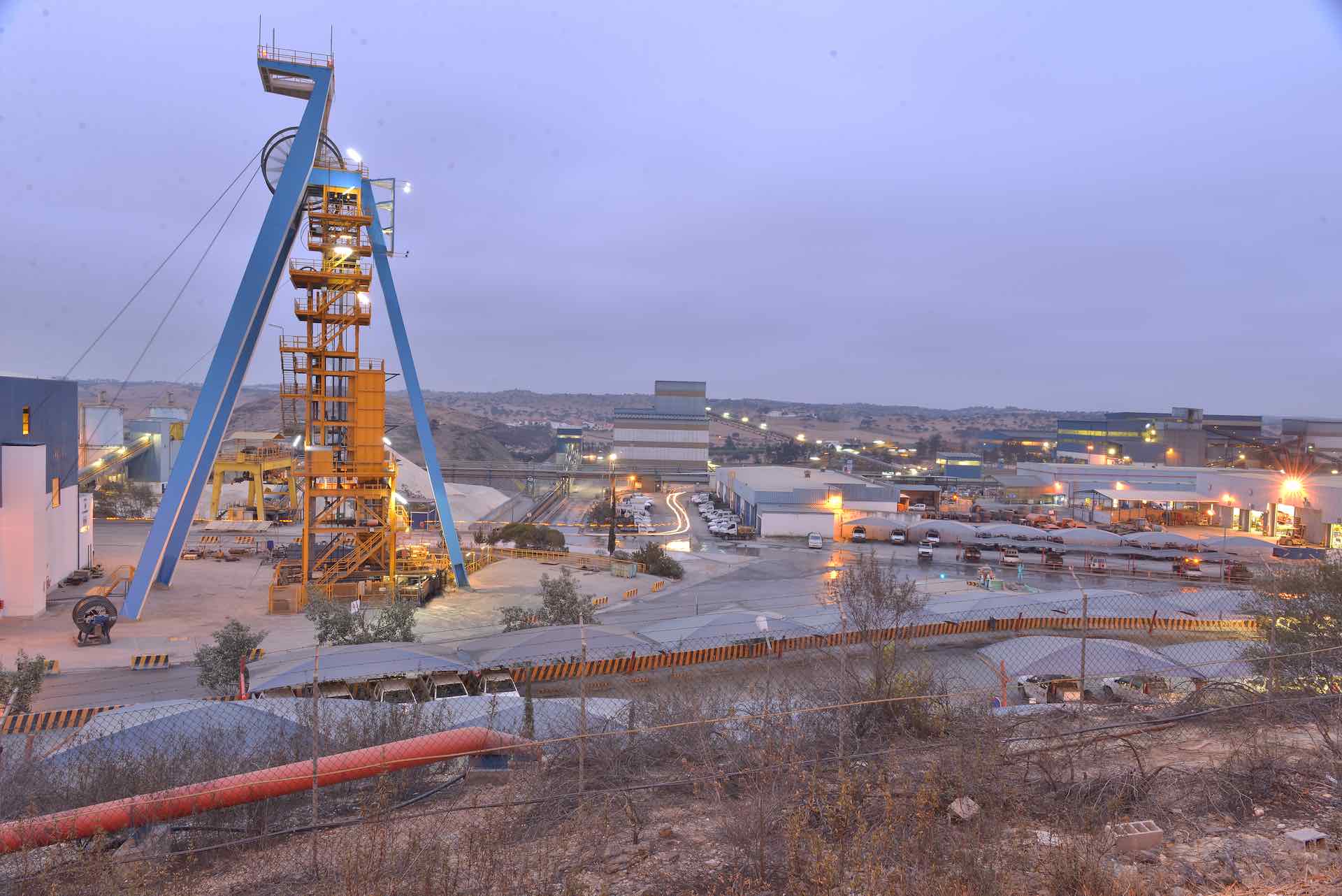Neves-Corvo is a mainly copper and zinc mine producing copper, zinc and lead concentrates. The operation is owned and operated by Lundin Mining’s Portuguese subsidiary SOMINCOR. Lundin Mining acquired Neves-Corvo as part of the company’s 2006 merger with EuroZinc Mining.
- Mine Copper, zinc, lead and silver
- Type Underground mine
- Ownership 100% Lundin Mining
- Location Alentejo Region, Portugal
Located in the Alentejo district of southern Portugal, the operation is situated approximately 15 km southeast of the town of Castro Verde and approximately 220 km southeast of Lisbon. Neves-Corvo has good connections to the national road network and a dedicated rail link into the Portuguese rail network and to the port of Setúbal. There are no major centres of population close to the mine, although there are many small villages with populations numbered in the hundreds. Most employees travel to the mine by provided buses or private cars.

Neves-Corvo mines underground from five major orebodies.
Bench-and-fill and Drift-and-fill.
The processing facility at Neves-Corvo comprises two plants.
The copper plant processes copper ores and has a capacity of approximately 2.6 million tonnes per annum (mtpa).

Neves-Corvo is located in the western part of the Iberian Pyrite Belt (IPB), which stretches through southern Spain into Portugal. The mineral deposits at Neves-Corvo are classified as volcano-sedimentary massive sulphide. They typically occur as lenses of polymetallic (copper, zinc, tin, lead) massive sulphides that formed at or near the seafloor in submarine volcanic environments. Seven mas- sive sulphide lenses have been defined comprising Neves, Corvo, Graça, Zambujal, Lombador, Semblana and Monte Branco. The base metal grades are segregated by the strong metal zoning into copper, tin and zinc zones, as well as barren massive pyrite. The massive sulphide deposits are typically underlain by stockwork sulphide zones, which form an important part of the copper orebodies.
Exploration surrounding the mine has focused on the search for additional blind massive sulphide deposits. Exploration techniques include soil geochemistry, geological mapping, various geophysical techniques including airborne magnetics, residual ground gravity survey, airborne gravity survey, ground electromagnetic survey and 3D seismic survey and exploration drilling. Recent exploration work has concentrated on the development of a 3D regional geological model and exploration drilling focusing on the area between Corvo, Zambujal, and Semblana deposits.


